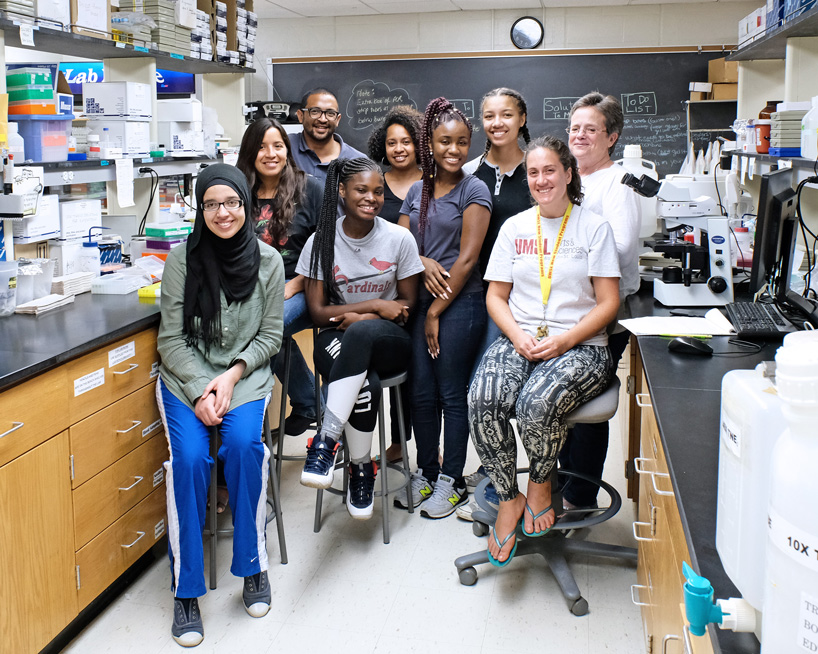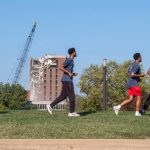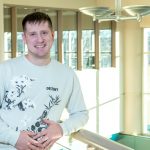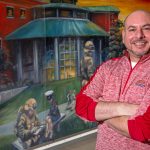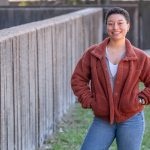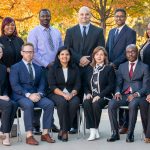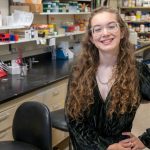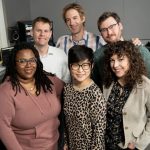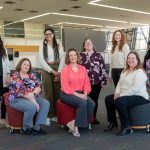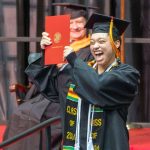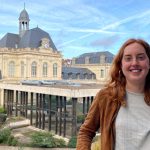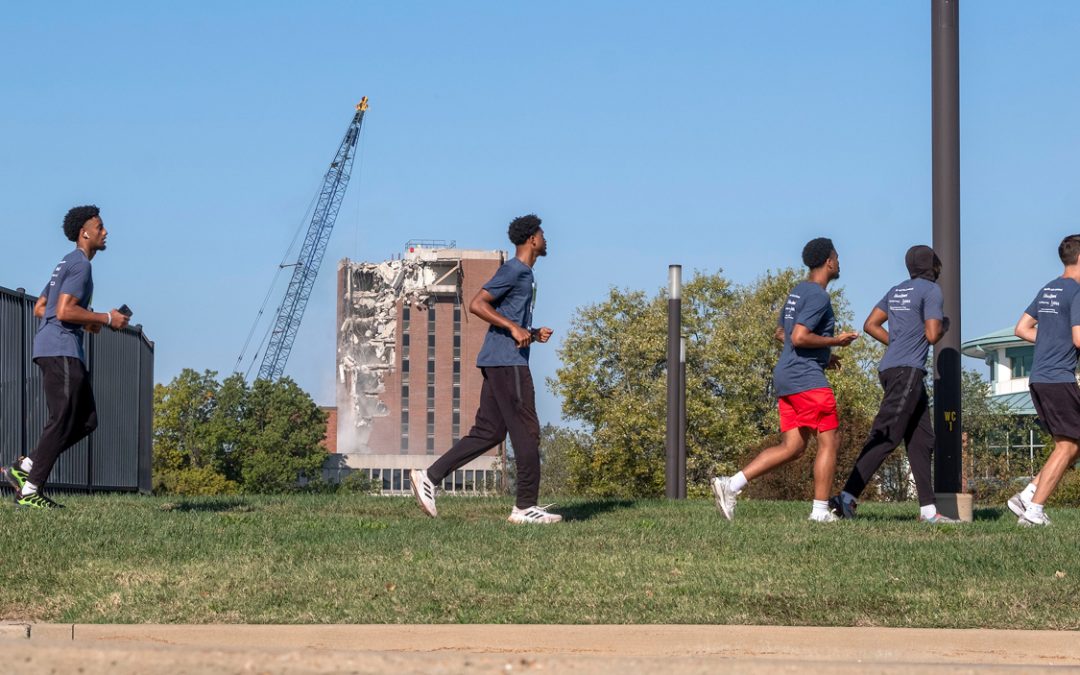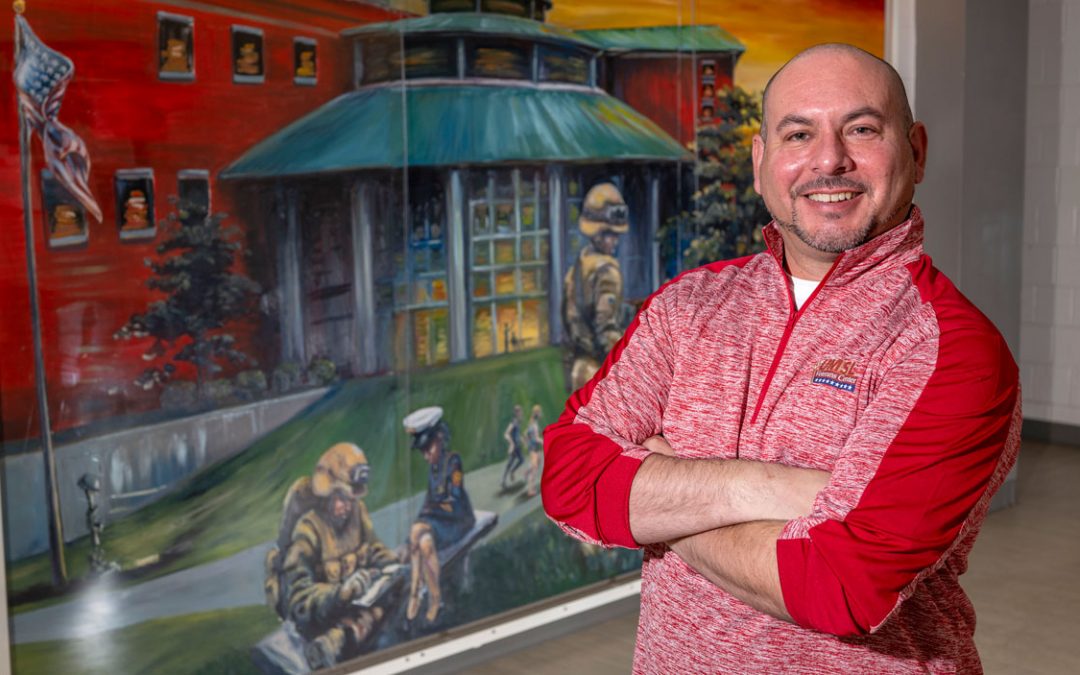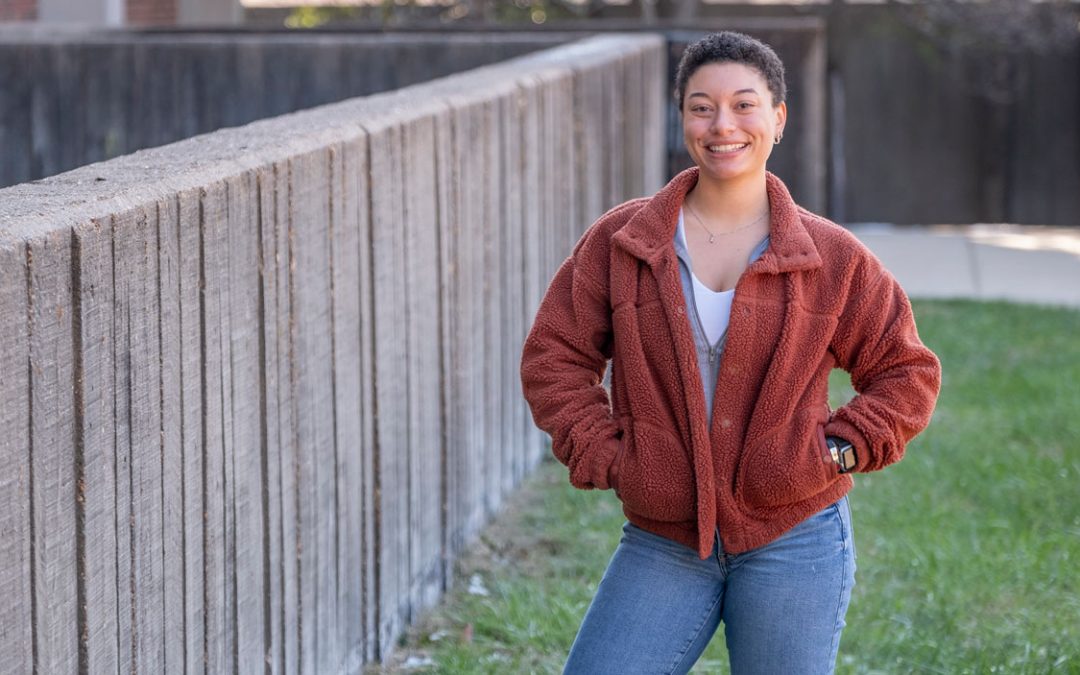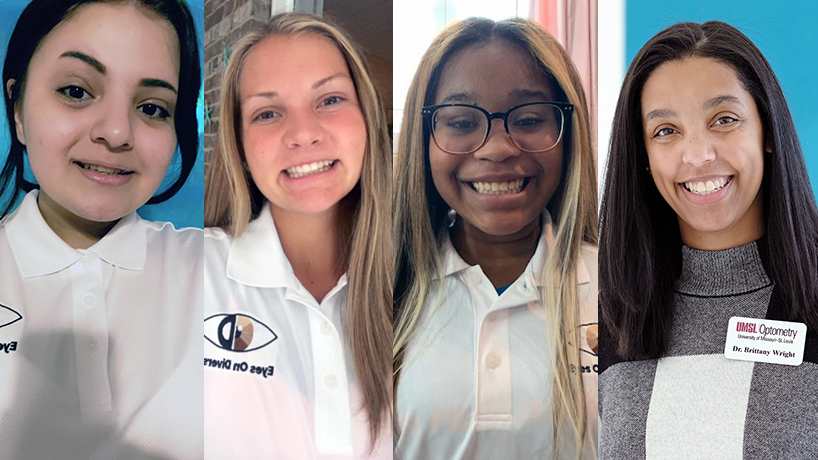
College of Optometry Assistant Clinical Professor Brittany Wright (far right) helped revive the summer program Eyes on Diversity, which intended to bring awareness of optometry as a career option to underrepresented high school students such as (from left) Isabel, Kaitlin and Annabelle. INSIGHT into Diversity magazine selected Eyes on Diversity – as well as the UMSL Collaborative Laboratory Internships and Mentoring Blueprint – for its Inspiring Programs in STEM Award.
Brittany Wright had been thinking about how she could instigate meaningful change.
The assistant clinical professor in the College of Optometry at the University of Missouri–St. Louis had been taking part in conversations with colleagues locally and across the U.S. about the lack of diversity in the profession.
“The diversity of optometry has not changed much in almost a decade,” she said. “It really was a time where getting involved was the only option. We needed to be intentional about exposing young students, specifically those from underrepresented groups, to optometry. The demographic of our students won’t change without a focus on recruiting qualified diverse applicants.”
Wright, who is also the coordinator of diversity, equity and inclusion for the College of Optometry, thought about a 2010 outreach program, Eyes on Diversity, created by Assistant Clinical Professor Angel Simmons and Vice Provost for Access, Academic Support and Workforce Integration Natissia Small and intended to bring awareness of optometry as a career option to underrepresented high school students.
With some encouragement from her peers and the college, the team revived it, and the second iteration is running virtually this summer.
But support for the program has come from more than local quarters. In July, Wright found out INSIGHT into Diversity magazine had selected Eyes on Diversity – as well as the UMSL Collaborative Laboratory Internships and Mentoring Blueprint – for its Inspiring Programs in STEM Award.
“It is really exciting because it was the first year that we brought the program back, and it was virtual, which was a different kind of challenge,” Wright said. “It was definitely a nice surprise. I didn’t expect it.”
This summer, an initial cohort of five high school juniors and seniors are going through Eyes on Diversity, which is presented in conjunction with the UMSL Office of Precollegiate Services and sponsored by VSP Global.
The program covers everything from essential college prep information, such as interview skills and writing entrance essays, to an eye anatomy and dissection lesson with Associate Clinical Professor Erin Brooks to what a day in the life of an optometrist looks like to a Q&A with current optometry students and UMSL alumnus Dr. O. Vanessa Avery, and Arizona-based practice owner Dr. Torrence Watkins.
Wright plans on offering the program to approximately 20 students in small cohorts throughout the year. She hopes those that attend will come away intrigued and excited about the prospect of a career in optometry, but her basic goal is for students to just know that optometry is an option for them.
“Through this program, we want students to realize there are many options in the health care field,” Wright said. “We want students to see all that optometry can offer, beyond prescribing glasses – the different specialties and modes of practice provide a fun, diverse career option. The other part is giving them the tools and resources and connecting them with people that are here to support and help them achieve their goals.”
E. Desmond Lee Endowed Professor in Zoological Studies Patricia Parker (far right) launched the Collaborative Laboratory Internships and Mentoring Blueprint in 2015 in conjunction with the Jennings School District. (Photo by August Jennewein)
Of a similar mind to Wright is E. Desmond Lee Endowed Professor in Zoological Studies Patricia Parker, who launched the Collaborative Laboratory Internships and Mentoring Blueprint in 2015 in conjunction with the Jennings School District.
Even more than the short-term benefits of spending time side by side with researchers and graduate researchers, the high school students that take part in CLIMB benefit from the exposure to new possibilities.
“It goes beyond the opportunities that CLIMB provides to get inside a collegiate-level research effort,” Parker said. “It exposes them to career pathways that they never dreamed of, all the diversity of career paths that are in, for example, the medical field, or in the data analysis field.”
Since that initial program, Parker and her collaborators have expanded CLIMB to include four school districts and 10 to 15 high school participants per year who are paired, based on their interests, with researchers in chemistry, biology, psychology, computer science, economics or communication.
Every participant is paid competitively and given a Metro Pass as well as meals throughout the day.
“We make sure these basic needs are met so that they could completely invest all their energies in this program while they were here,” Parker said. “Each one of them has a slightly different story, so it takes a lot of personal touch and personal investment in the students.
“Essential to that function of the program are partnership with Dr. Rhonda Key and Dr. Miranda Ming, educational leaders from the North St. Louis districts. Their extensive experiences with these high-ability but low-opportunity students help prepare the students for the best experience while they are at UMSL.”
Parker and her partners are hoping to expand CLIMB thoughtfully over the coming years so that each student still receives the same personalized attention that’s resulted in almost every participant going on to college and prompted some to return for letters of recommendation for graduate school or simply to share their experiences with the current cohort.
With any luck, receiving an Inspiring Program in STEM Award will help CLIMB even further along this path.
“Every time we get a recognition like this, it validates our efforts that we’ve made to meet this need,” Parker said. “We’re really very proud of that, especially when you are recognized in this way, by an organization that is not local. To get this kind of recognition more broadly, that means an awful lot.”

